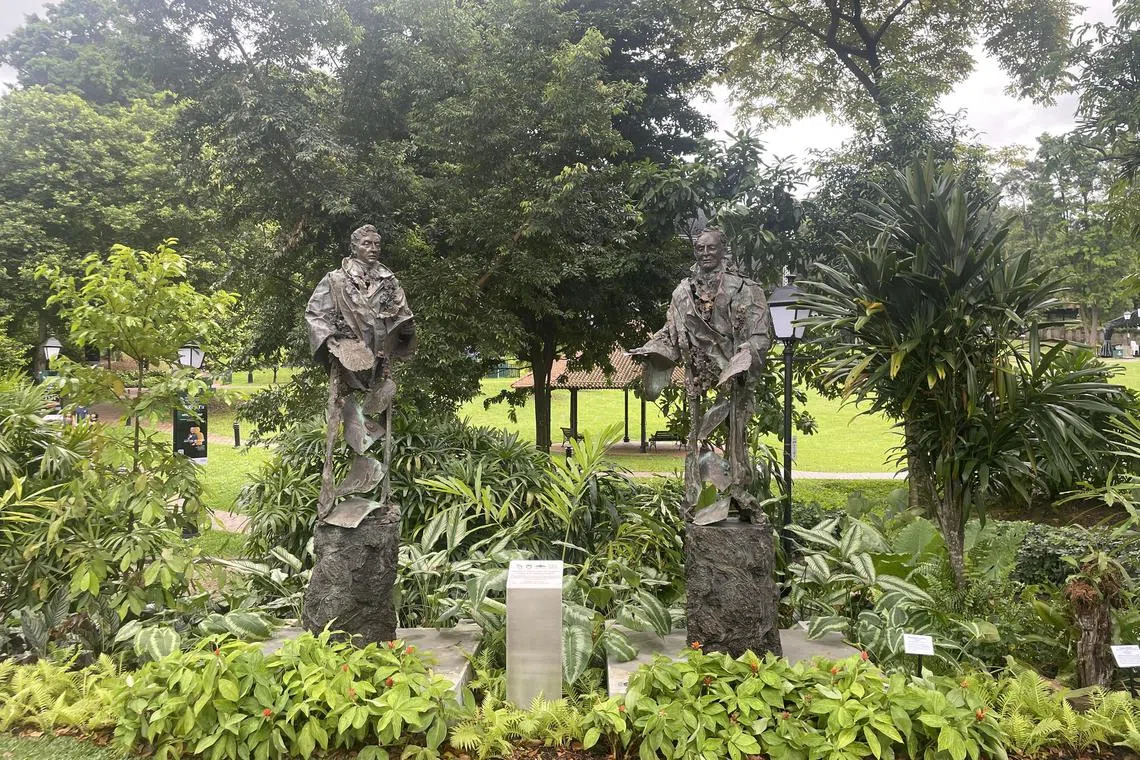A to Z of 2024: Smoking samsui woman the unlikely protagonist in year of controversial public art
Sign up now: Get ST's newsletters delivered to your inbox

Singapore-based American artist Sean Dunston’s mural of a young samsui woman with a cigarette at 297 South Bridge Road.
PHOTO: ST FILE
Follow topic:
SINGAPORE – In a country where art rarely gets the spotlight, it was an unlikely mural of a young samsui woman with a cigarette in hand which sparked one of Singapore’s most controversial public art debates.
On June 27, The Straits Times reported that the Urban Redevelopment Authority (URA) had ordered the cigarette on the 297 South Bridge Road mural to be removed
After the report, artists, tour guides, history buffs, advocacy organisations and the online commentariat spilt much ink over whether the unauthorised mural should be removed or remain unchanged
An anonymous member of the public, the URA had said in an e-mail to the building’s representatives, even said the woman depicted “looks more like a prostitute than a hard-working samsui woman”.
After weeks of public debate the mural can remain, although the building owner would be fined
They added that they would work with the building owner to find ways to “mitigate any impact the mural may have in promoting smoking, without modifying the mural itself”.
The mural stands unmodified in Chinatown, and its overnight fame has attracted legions of locals and tourists to pose with this improbable icon. The mural’s artist, American Sean Dunston, told ST that he has submitted a proposal to the URA to put up an artwork label and is waiting to hear back on approval.
Dunston’s Samsui Woman At Rest (2024) fired the public imagination because it showed a different face to a familiar figure usually depicted as a wrinkled old woman at work
The controversy ultimately showed that an artist’s biggest superpower is defamiliarisation, which can be used to question society’s most dearly held assumptions.
Arguably, it also revealed how nostalgia is a potent force in Singapore society
Similarly, a debate on colonial nostalgia and violence ensued after the third public statue of Sir Stamford Raffles
Wales-based sculptor Andrew Lacey’s Scholars In Conversation (2024) pairs Raffles and botanist Nathaniel Wallich, who played a key role in establishing Singapore’s first botanical and experimental garden.

Scholars In Conversation: Sir Stamford Raffles & Dr Nathaniel Wallich – a pair of contemporary bronze works – was unveiled in Fort Canning Park on May 21.
ST PHOTO: CLEMENT YONG
Both controversies moved beyond casual art criticism into the realm of Parliament when arts Nominated Member of Parliament Usha Chandradas spoke about the works in an adjournment motion on Aug 7. She called for better policies on labelling public artworks to help contextualise art for the public
Minister for National Development Desmond Lee also said in a written parliamentary reply to Ms Chandradas about the basis of the Fort Canning statues and decolonisation that Singapore takes “a clear-eyed view of our colonial past”
And, in another public art debacle, two art banners by the Singapore Art Museum (SAM) were swopped out
As Singapore’s arts scene develops, more public and community arts projects will appear on the island. It is only natural to expect more discussion and controversies about public art and artistic expression – which, if taken in the right spirit by all parties, is the mark of a healthy and mature arts scene and audience.
After all, for an artist, the only fate worse than being criticised is to be ignored. In that regard, the public discourse around the samsui woman has been a rare and valuable exercise in public art criticism. Look closely and one can almost see the young samsui woman grinning.

